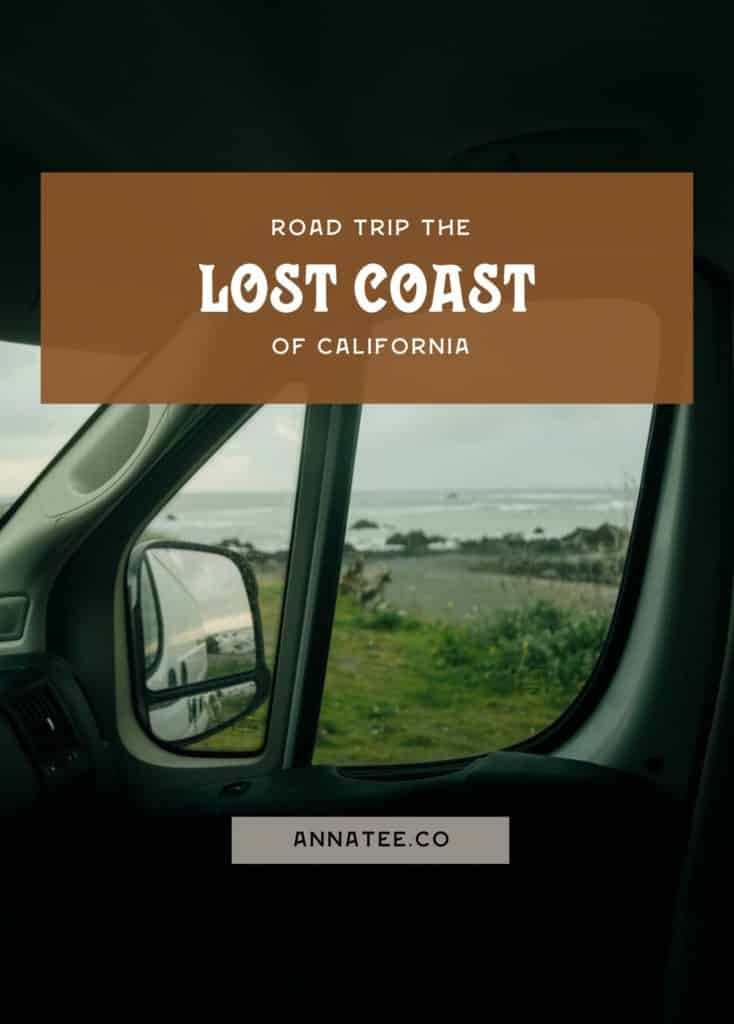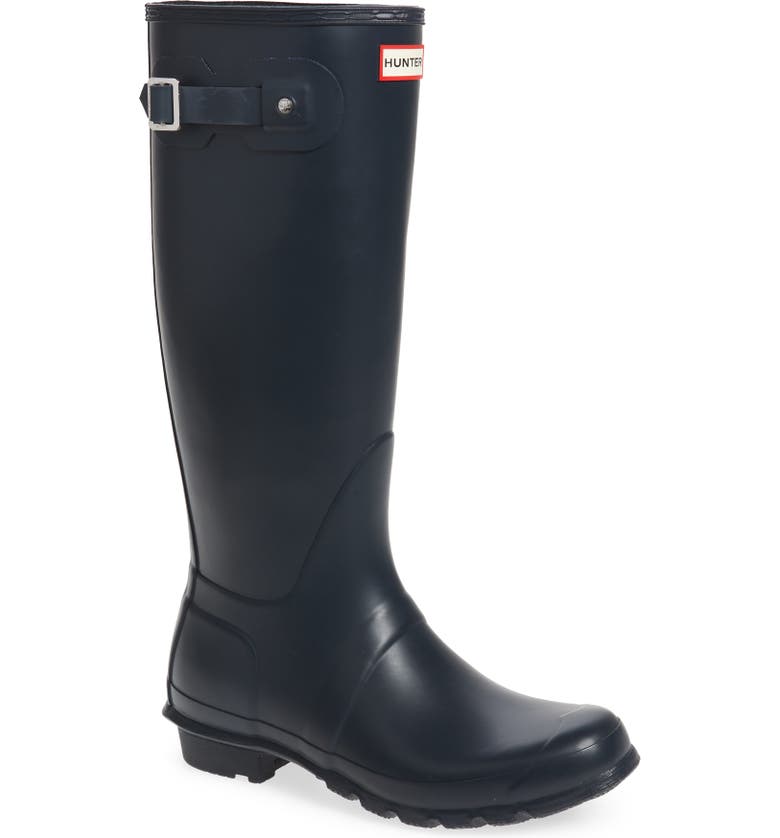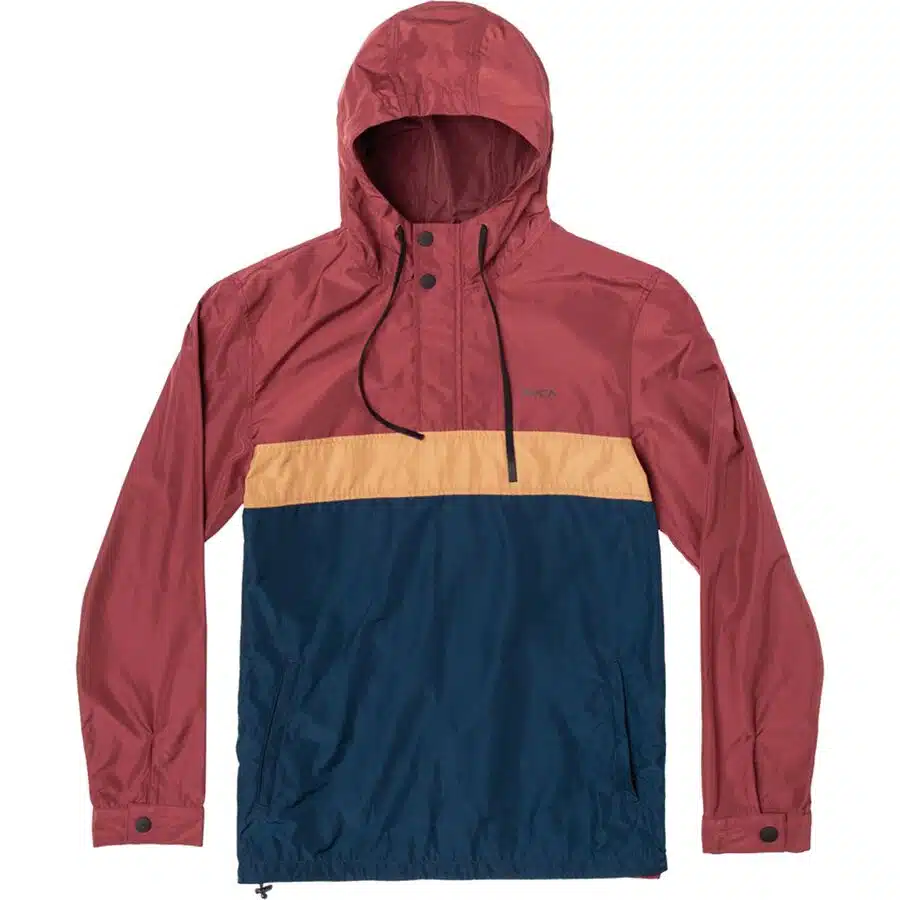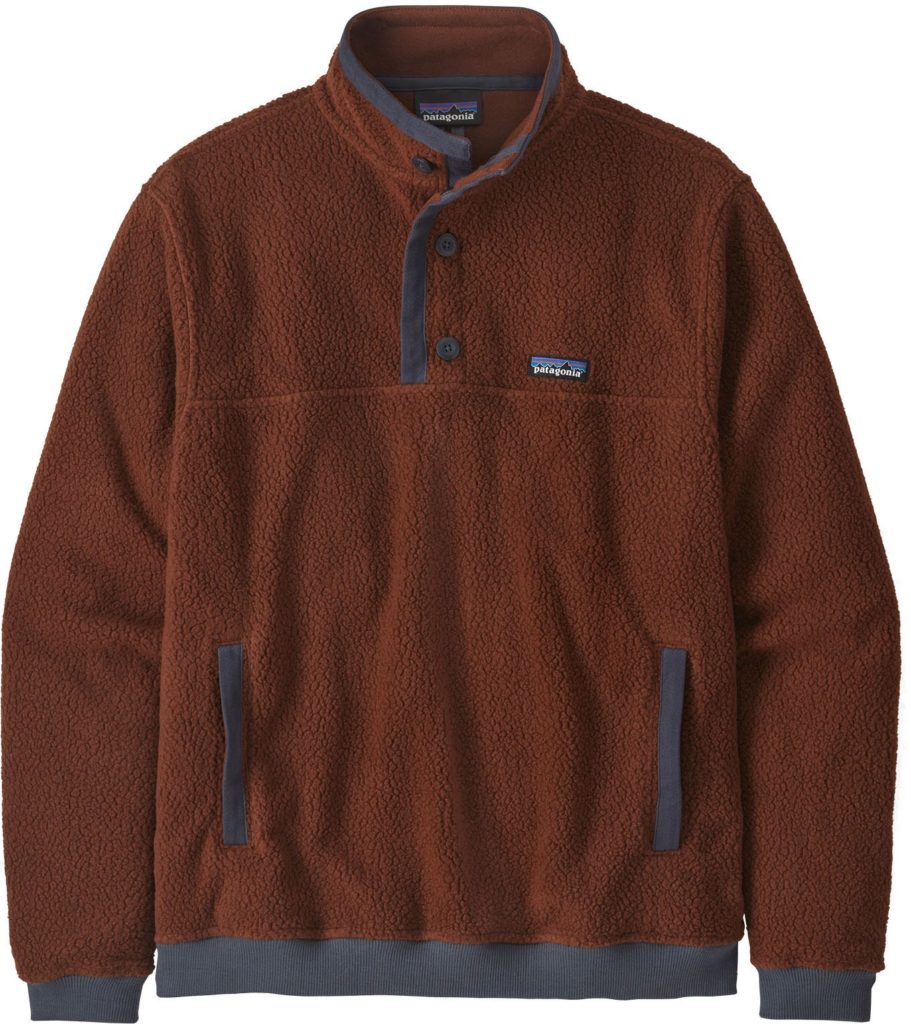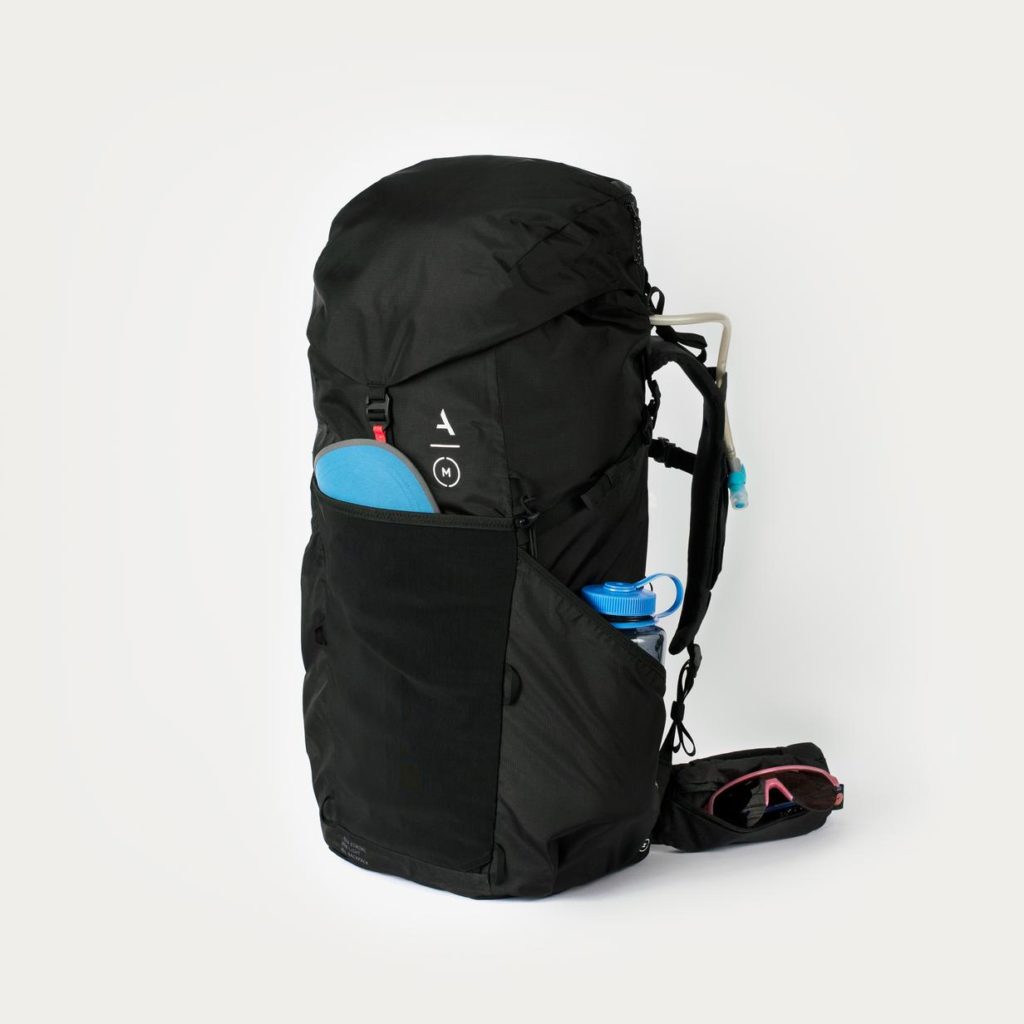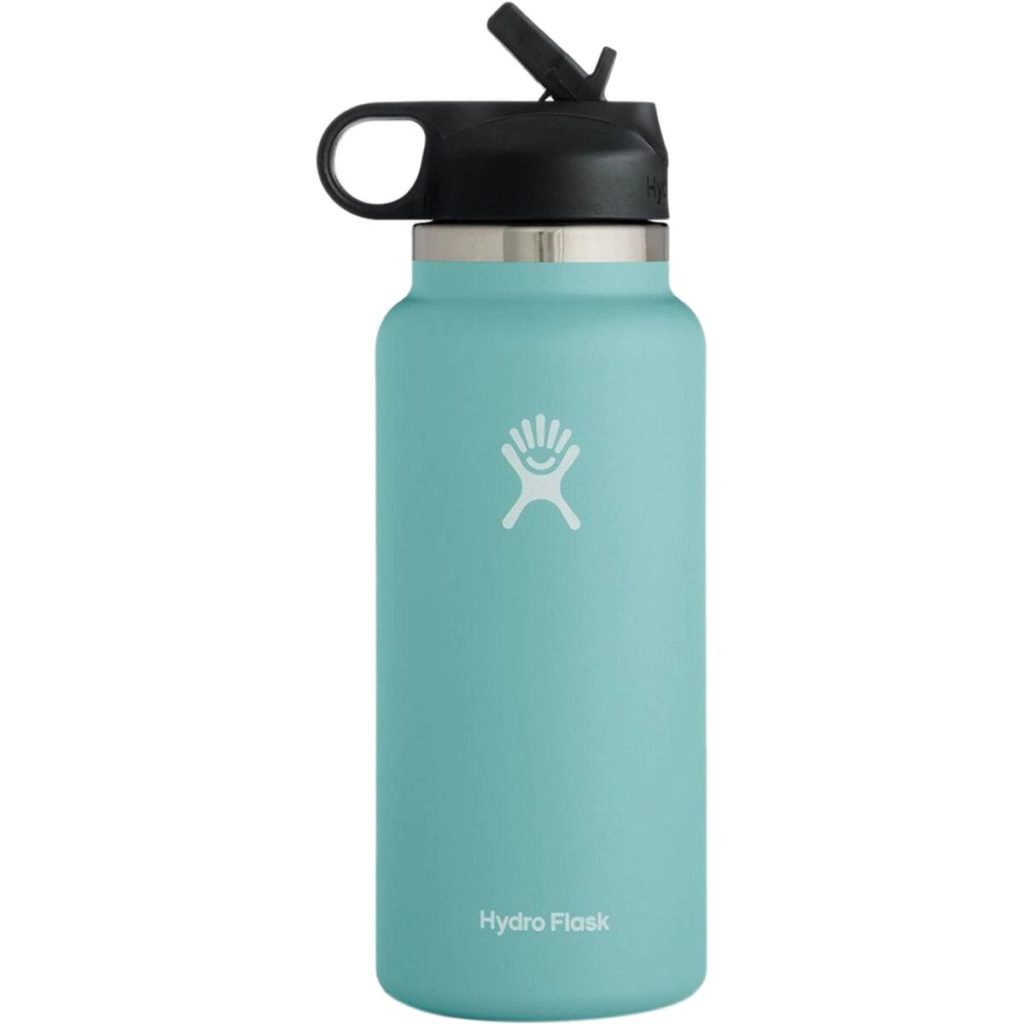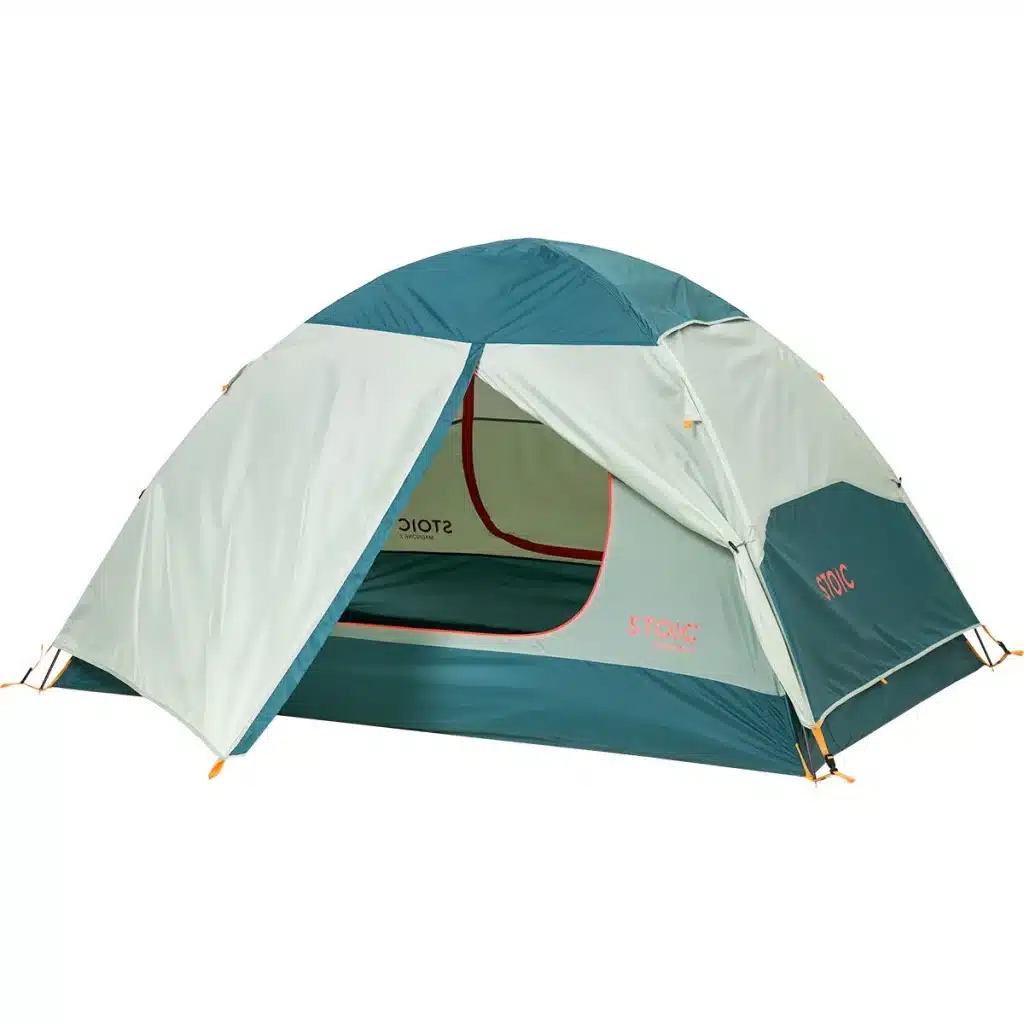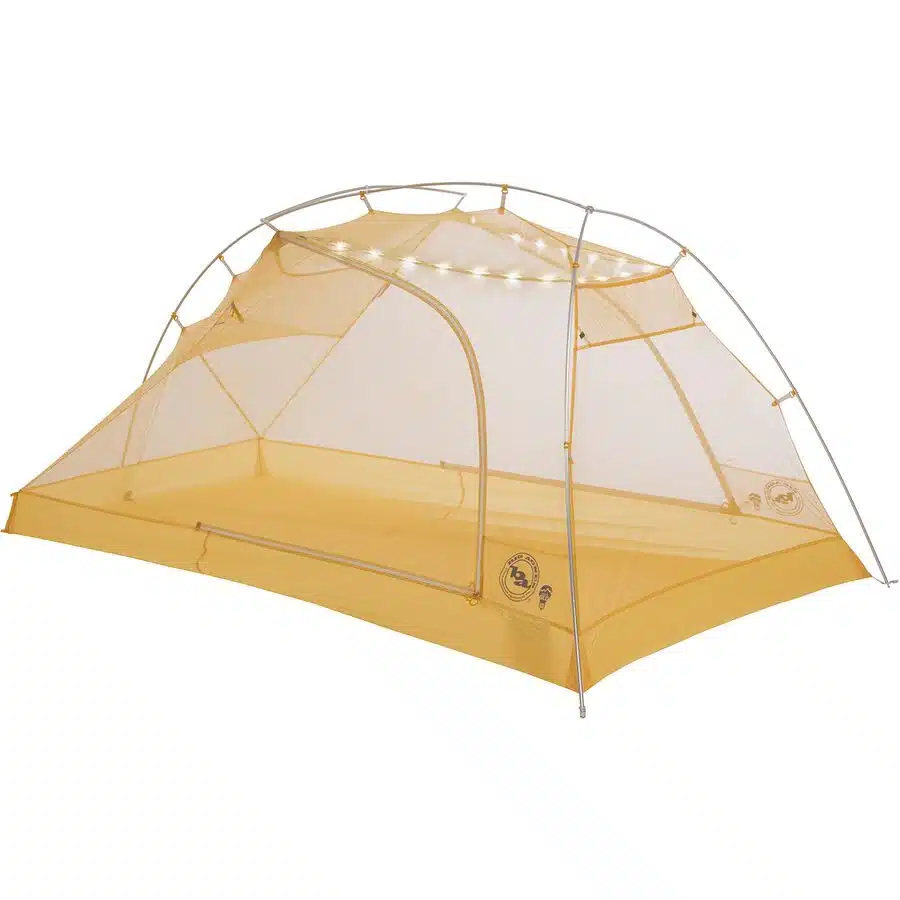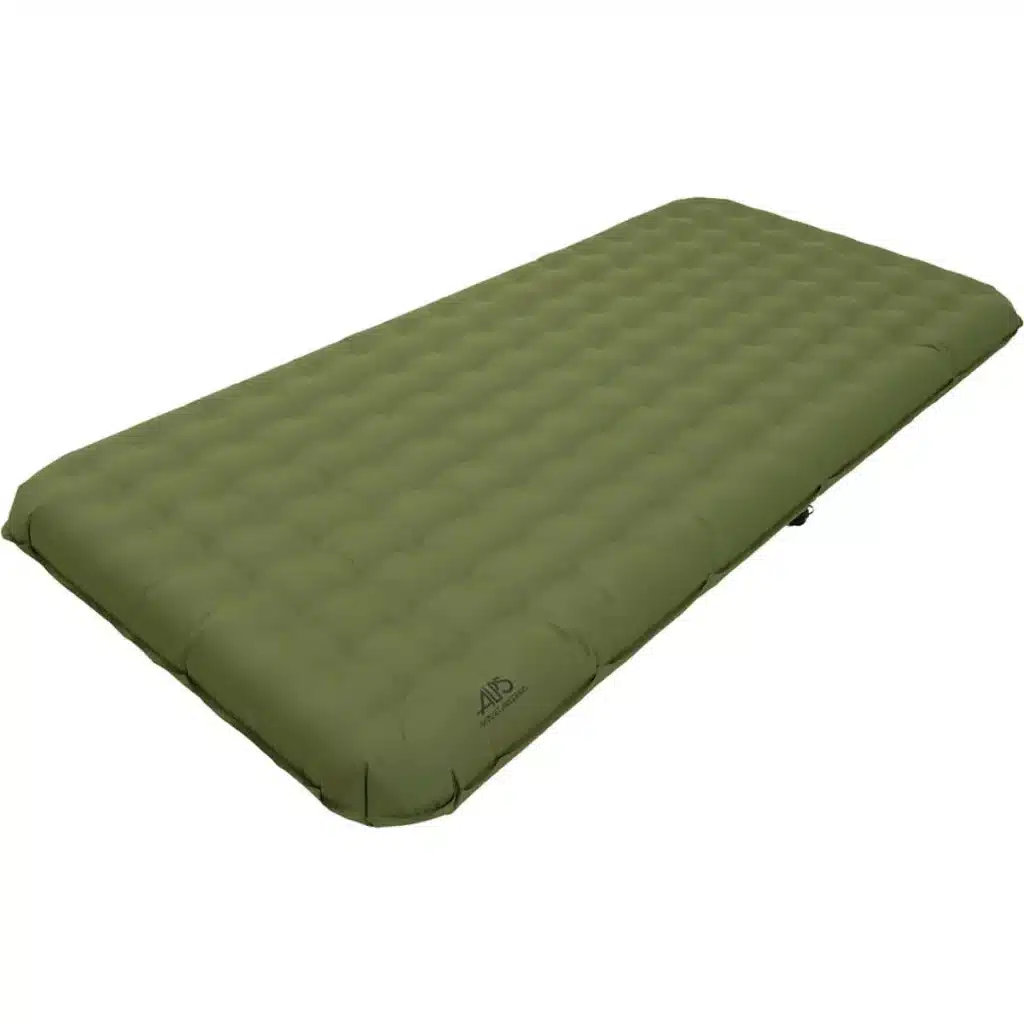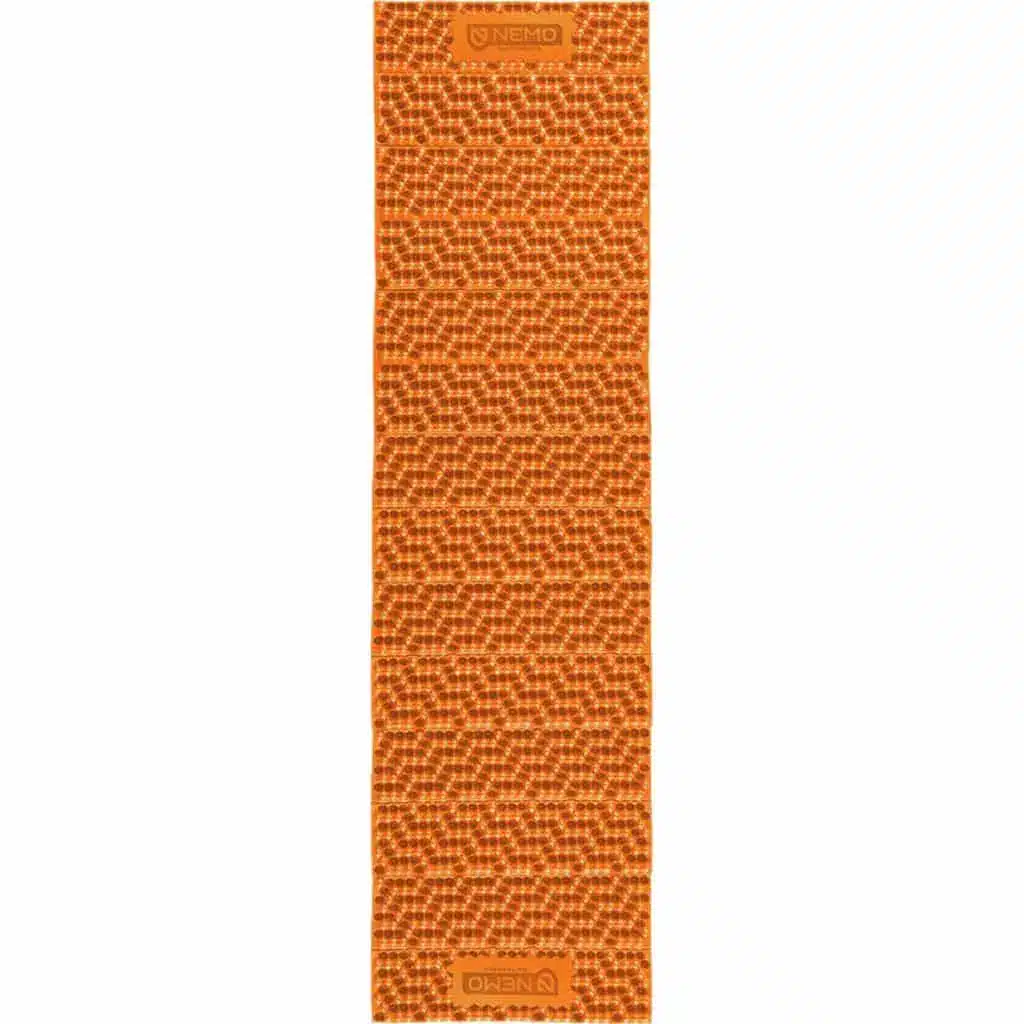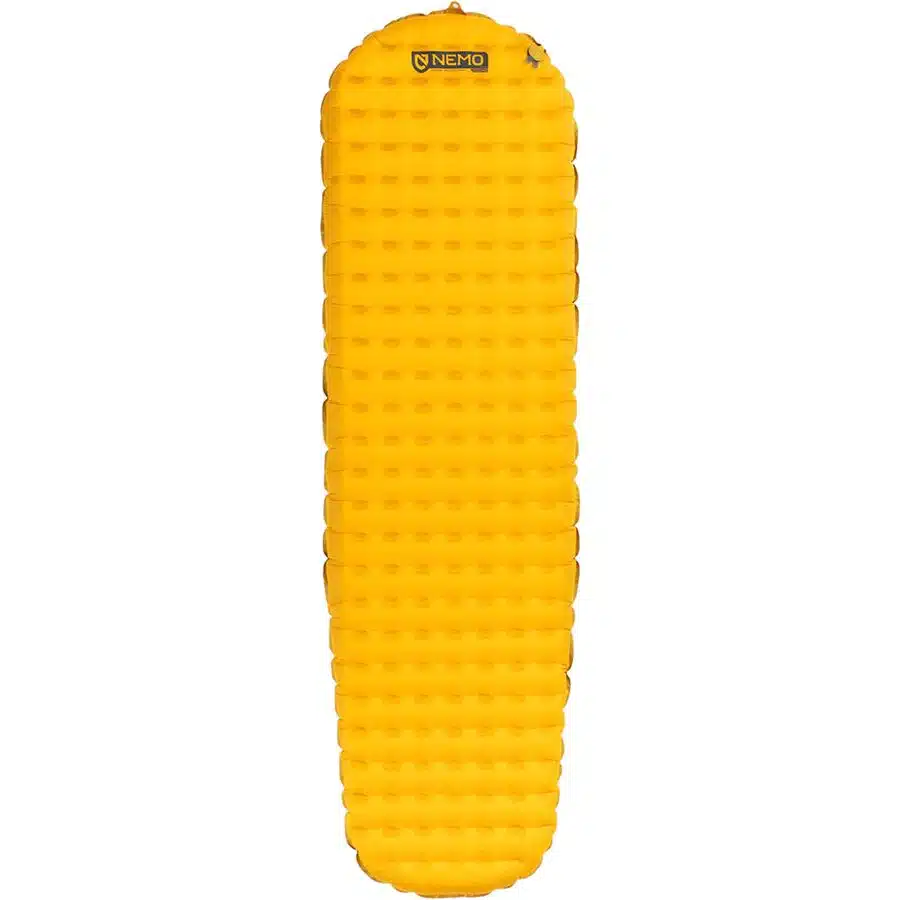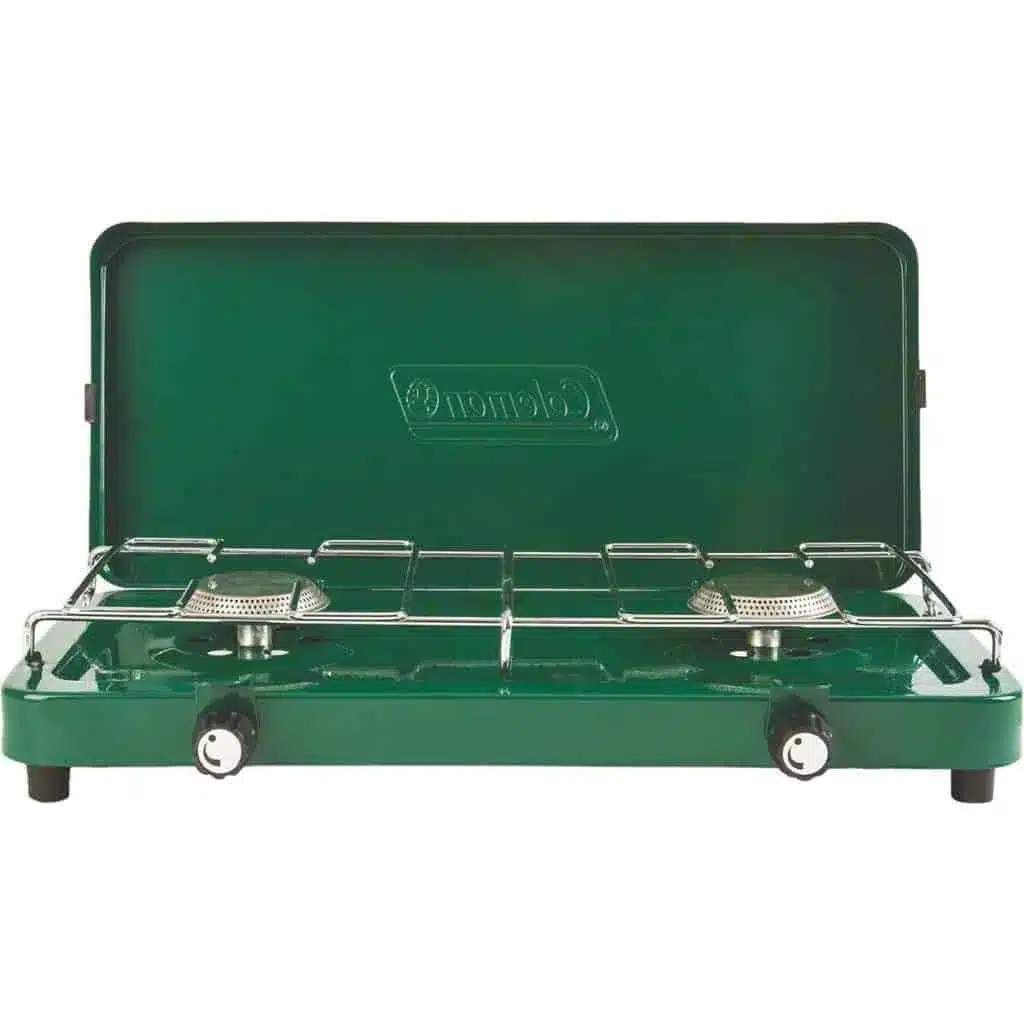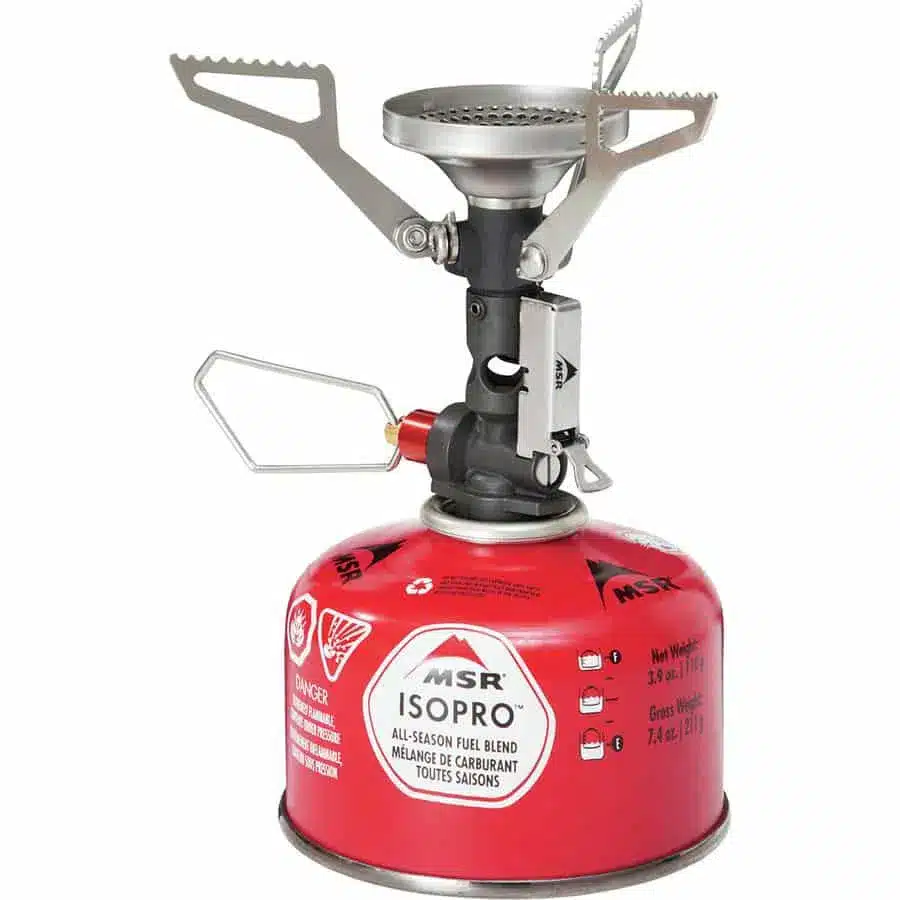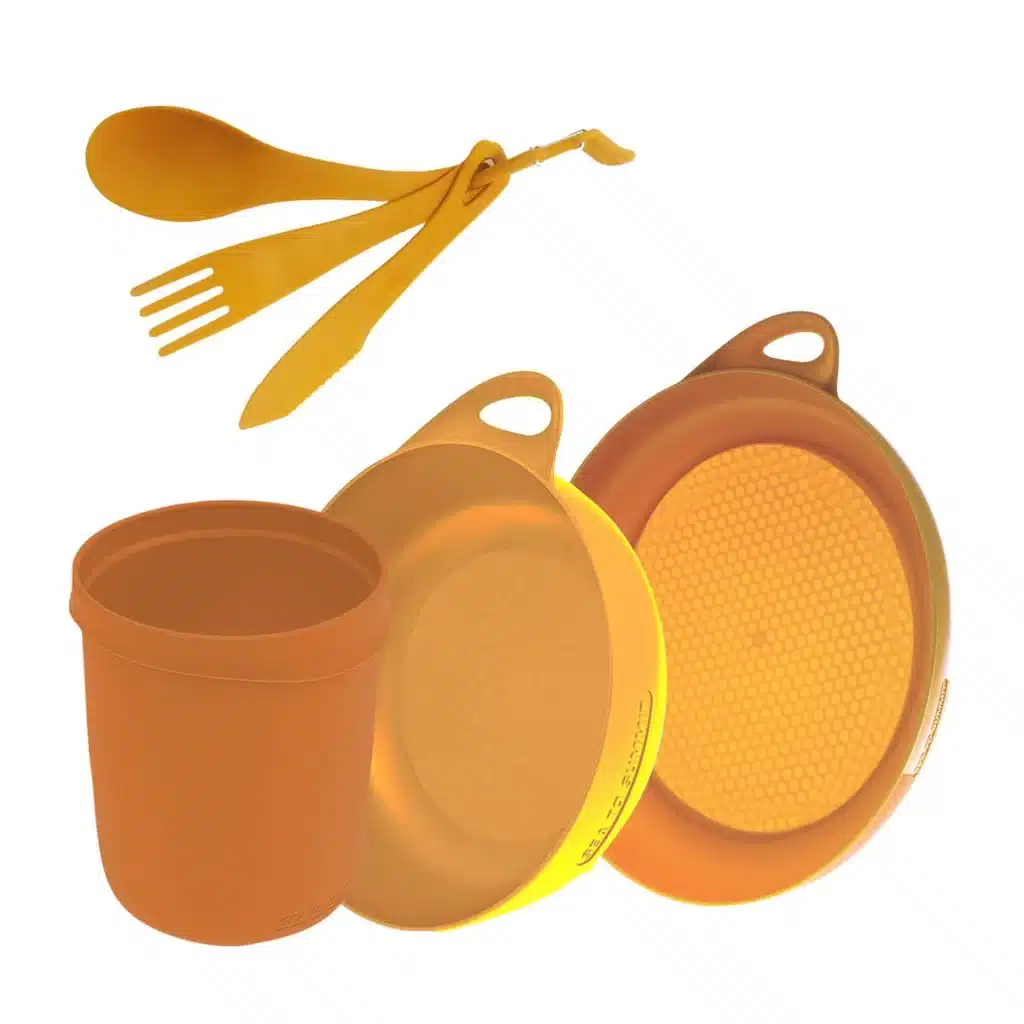Lost Coast Road Trip: Things to See on California’s Lost Coast
While the entirety of the California Coast is unbelievably beautiful, there’s no denying that most of it is pretty well known, with lots of people at the beaches and on the trails. But, did you know that there’s a place on the northern coast that’s rugged, undeveloped, and almost entirely empty? The Lost Coast of California is the ultimate secluded, less traveled place for a road trip!
This guide is all about the Lost Coast – tips for getting there, the best places to explore, things to see, and a Lost Coast road trip itinerary that you’ve got to try!
Head’s up: some of these links are affiliate links, so I get a commission if you make a purchase (at no cost to you). But that’s great, because I was going to share anyway, and this helps me keep making free guides for you!
Pin this photo to save this Lost Coast road trip guide and reference it later!
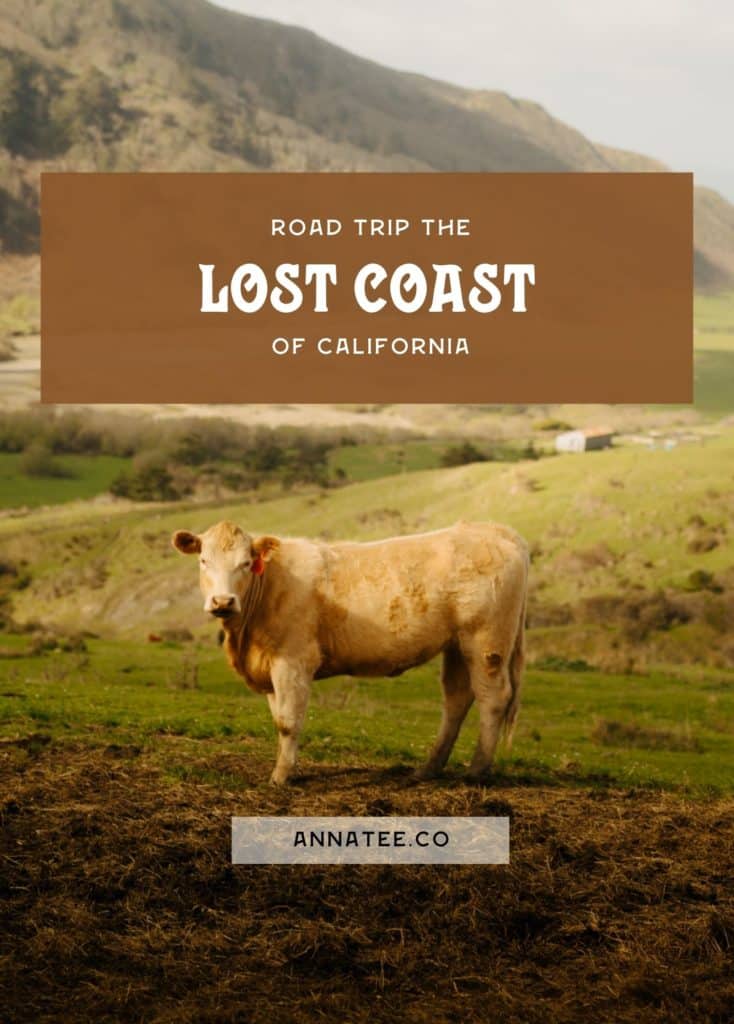
Why is it Called the Lost Coast?
The Lost Coast officially gets its name from the depopulation it experienced in the 1930s, but the name now signifies the remoteness of the area. The coastal mountains in this area proved to be too difficult to run a highway through, so the coastal Route 101 swerves inland for about 75 miles, before Highway 1 begins and takes drivers back to the scenic coast of California!
This means the Lost Coast is far off the main highway, and as a result it’s isolated and off the beaten path, and it’s just about the last place on the California Coast that can be considered truly wild. Visit the Lost Coast, and you’ll have many of the beaches entirely to yourself!

Where is the Lost Coast in California?
The Lost Coast begins roughly at Ferndale in the north, and Rockport in the south. To get here from the north, you’ll take the 101, then turn onto Highway 272 to Ferndale – this town is the last developed section of the Lost Coast for a while, and you’ll drive Mattole Road into the countryside!
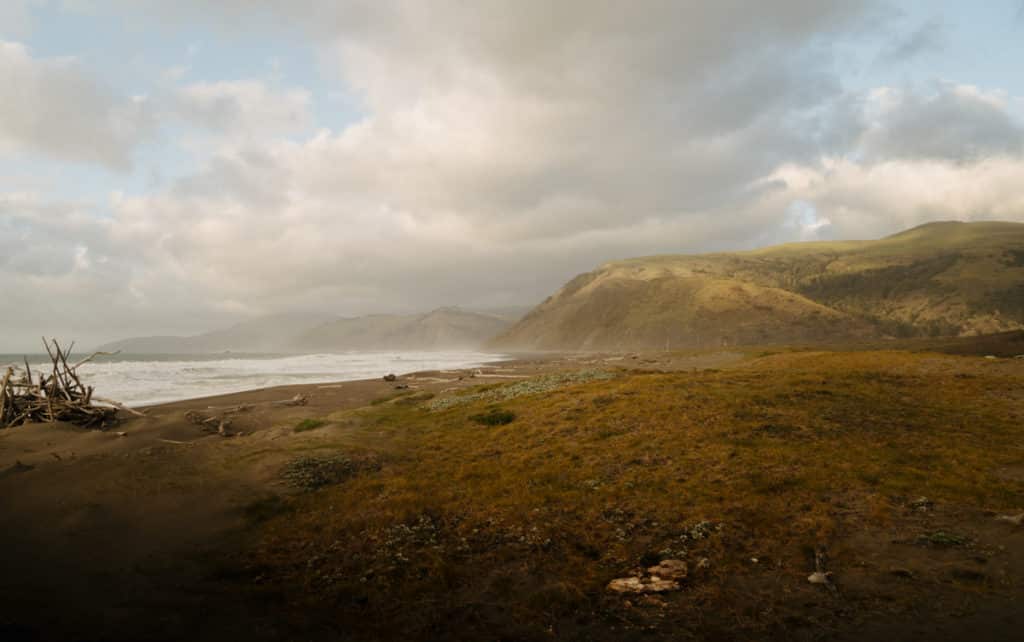
The Best Time for a Lost Coast Road Trip
The Lost Coast is stunning any time of year, but like much of the northern coast, it’s very rainy! From late October to April, it rains often, but this means you’ll likely have the views all to yourself. Though it’s rainy, the temperatures rarely get too low – so you can still enjoy the coast, as long as you bring a rain jacket!
Summer is the best time to go for sunshine and warm weather, but you can expect to see some more people out and about – but don’t worry, the Lost Coast is never too busy.
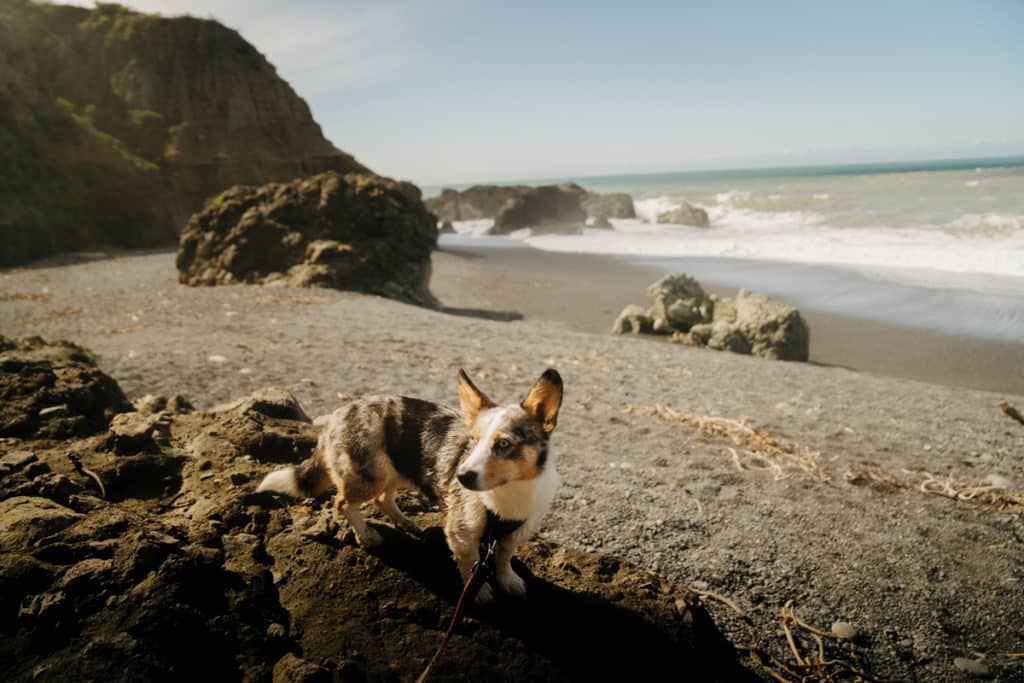
What to Bring for a Lost Coast Road Trip
To help you pack for your Lost Coast road trip, here are some essentials to bring with you!
Waterproof Shoes
After it rains, the trails on the Lost Coast get really muddy! So waterproof shoes are a must if you’re planning on hiking or exploring. Even if you aren’t hiking, I recommend waterproof shoes for any scenic stops along the Lost Coast.
My favorite hiking boots are my Danner boots – they’re cute, comfortable, and waterproof! I also love hiking in my Chacos, and they’re also amazing for exploring the beaches. Rain boots are another great option for muddy conditions, and are definitely the easiest to clean.
Bonus Tip: A lot of these links are for my favorite place to buy outdoor gear – Backcountry. If you install the free Lolli extension on your browser, you can earn free Bitcoin when you shop online at certain retailers, including Backcountry. You can transfer it to a crypto wallet, or just cash out to your bank account.
Rain Jacket or Windbreaker
The Lost Coast is known for moody weather. It rains often, but even if rain isn’t in the forecast, I recommend bringing a windbreaker any time you’re going to be by the water. Even in the summer, the ocean “breeze” is more like a strong wind, and even on a sunny day you’ll get chilly fast!
The Marmot Minimalist Jacket is a great lightweight, waterproof option for hiking in the rain. For windbreakers, the RVCA Meyer Packable Anorack Jacket is cute, and folds up nice and small! For added warmth and layering, add a a Patagonia fleece.
Backpack
You need somewhere to put your snacks! And your hiking gear, of course.
When I’m bringing my camera gear, my favorite backpack is the Alex Strohl Mountain Light. It’s definitely the best camera bag out there for hiking with photo gear. If you don’t need storage for camera stuff, I recommend an Osprey Hikelite. If you aren’t planning any intense or long hikes, I love my Topo Designs Y-Pack for carrying everyday essentials!
Hydration!
Especially when you’re hiking or exploring outdoors, it’s important to stay hydrated! Single use water bottles are, of course, terrible for the environment, so avoid that and bring a reusable one!
For hiking, the CamelBak water reservoirs are convenient and easy – they can fit in your hiking backpack for water on the go. Nalgene water bottles are great for day to day, and if you want an insulated water bottle to keep your water cold and refreshing, Hydro Flasks are the best!
Tent
You can stay in hotels throughout your Lost Coast road trip – but there are also tons of campsites that make for a cheap (or free), scenic place to sleep!
If you want to camp, you may need a tent. The Stoic Madrone 2 person tent is a more budget friendly option. If you backpack, you may want to invest in a lighter tent – the Big Agnes Tiger Wall tent weighs less than 2 pounds!
If you’re traveling alone, I really recommend trying out hammock camping! Sleeping in a hammock is incredibly comfortable – you’ll never go back to a tent. The ENO hammocks are definitely the best, and you can get a rain cover as well. Though I wouldn’t sleep in a hammock with two people, the double nested hammocks are comfier, and if you sleep in it, it’s big enough to wrap around and protect you from bugs.
Sleeping Pad
Whether you plan to car camp or tent camp, a sleeping pad is a necessity for comfy nights! It takes up much less space than an inflatable mattress, but can help just as much with comfort on the road.
The ALPS Mountaineering Velocity Air Bed is comfortable and great for car camping, and big enough for two. For a lightweight option, the NEMO equipment Switchback Sleeping Pad folds up small and is also great for backpacking! If you’re going to be car camping or backpacking in colder weather, the NEMO Insulated Sleeping Pad is another great, lightweight option.
Camping Stove
When you’re on your Lost Coast road trip (or any other road trip), having a camping stove makes all the difference – you can make your morning coffee, or cook a hot meal at a gorgeous overlook.
Coleman makes the best camping stoves. For smaller, more packable options (good for backpackers), check out the MSR Pocket Rocket stove. A camp cooking set that’s small and easily packable is a great addition to any camp kitchen!
How to Get to The Lost Coast
Getting to this remote area of the California Coast can be a bit of a challenge – so read these directions before you go! These will take you from north to south, but you can totally do it the other way.
Fill Up on Gas!
There’s only one gas station on the Lost Coast, and it’s on the south side of this route. Before you start your Lost Coast road trip, be sure to get gas! Eureka has lots of gas stations, and there are a couple right before you turn off the 101.
Getting to The Lost Coast
When you’re driving from the north, you’ll take Highway 101 south, and take exit 692 onto Highway 211. This begins your road trip to the Lost Coast! Follow this road, and you’ll reach Ferndale – the last developed town for quite a while. From Ferndale, you’ll continue southwest on Mattole Road.
I had read a few scary reviews of Mattole Road – people described it as nightmare to drive, so I was a bit nervous. But, after taking a road trip to the Lost Coast, I can honestly say that the road isn’t bad at all. It looks like there has been work done on it recently, so maybe it used to be a lot worse. Now, there are some spots where it’s bumpy, some potholes, and a few steep sections – but drive slow around the curves, and you can do it in any car!
As you drive down Mattole Road, you’ll first go through the countryside – with rolling hills, a lot of adorable cows, and the occasional vista over the ocean.
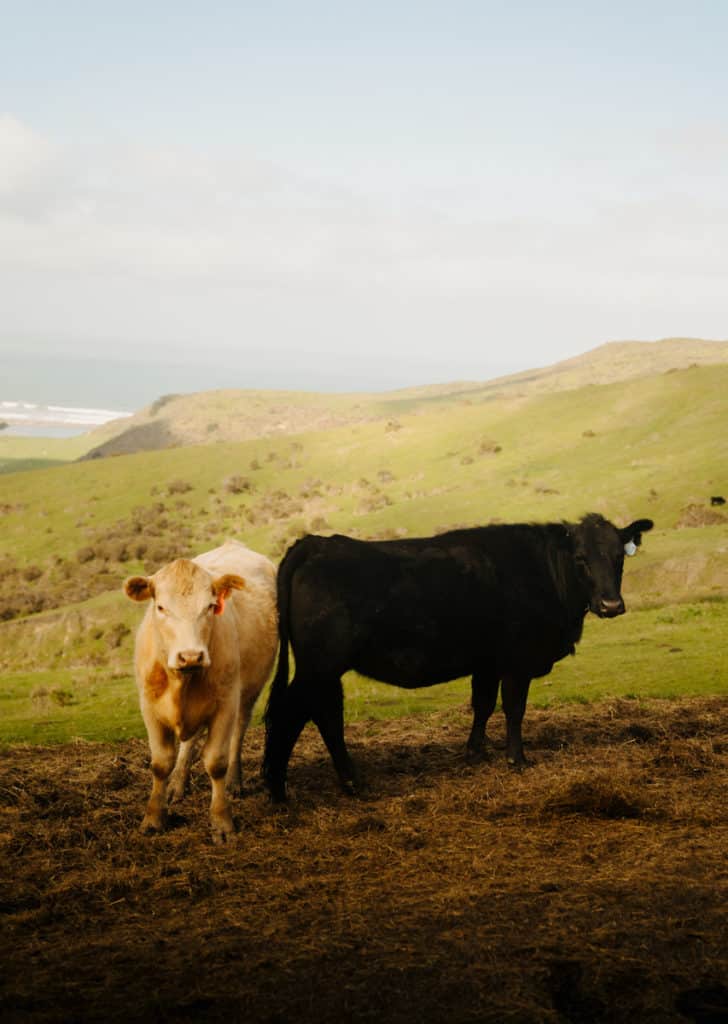
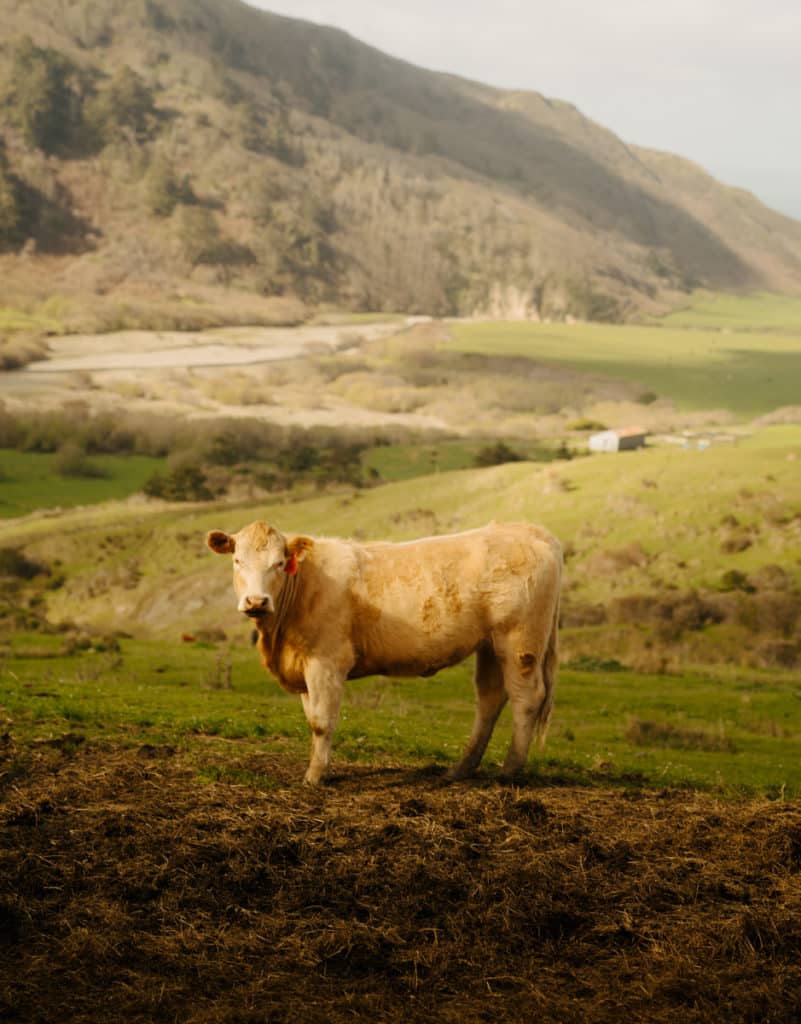
As you continue, you’ll reach the portion of Mattole Road that goes along the coast! In the next section, I’ll talk more about the best stops on your road trip and things to see.
Continue on Mattole Road to Petrolia – this is where the only gas station is, so fill up if you need to! From here, I recommend taking a detour on Lighthouse Road, which is a dirt road (doable for any car – just avoid the pot holes) to see the beach. When you come back, you’ll get on Mattole Road again, and take that to the town of Honeydew!
From Honeydew, you can take Mattole Road out through Humboldt Redwoods State Park and return to Highway 101 – but if you still have some time, there’s more to see on this Lost Coast Road Trip.
I recommend continuing on to Shelter Cove. There are two ways to get here – the first is to take Wilder Ridge Road – an easy, mostly paved road (with some bumpy but doable dirt sections), which turns into Ettersburg Road, which becomes Briceland Road, which you can then follow to Shelter Cove.
The other way is to take a more adventurous route – make that same turn onto Wilder Ridge Road, but make a turn onto King’s Peak Road instead. This will take you through the forest, on a dirt road that offers some great scenery, and a secluded route! Be careful with this one – I drove it in my front wheel drive Promaster van, and there were a couple sections where I struggled. I made it, and it was fun, but I would probably recommend a 4×4 vehicle, especially if it’s rained recently, because the dirt road can get muddy.
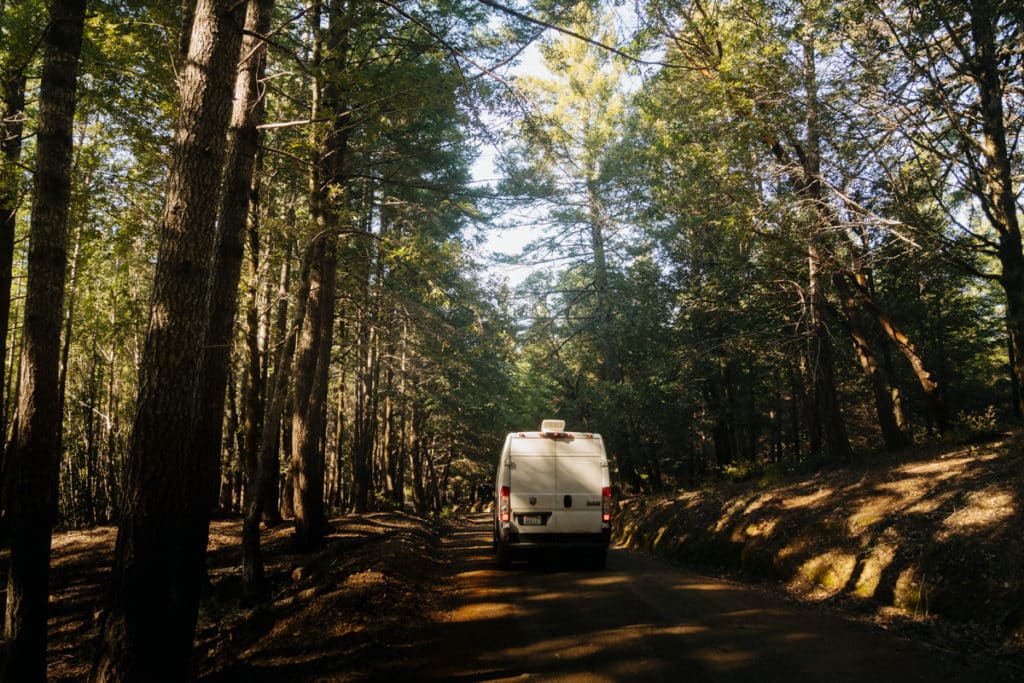
Whichever route you choose, take it to Shelter Cove! This is the last stop on our Lost Cost road trip – but make sure to read the next section to see the best beaches, scenery, and places to go along this route! There will also be a map of all the roads and all the destinations.
To leave the Lost Coast, take Shelter Cove Road (turns into Briceland Road) out to the 101!
Things to See on a Lost Coast Road Trip
While you’re on your Lost Coast Road Trip, you’ll definitely want to stop at a few places! Here are the best things to see on the Lost Coast. These are listed from north to south, but if you want to start in the south, you can do this backwards!
Ferndale
Ferndale is an adorable city with Victorian style buildings, storefronts, and homes. It’s a great little town to explore, and the last really developed place you’ll see as you keep driving on the Lost Coast! This was also the last spot that I had good cell phone service, so be sure to get groceries, download offline maps, and prepare for the rest of your road trip.
You can get some ice cream at the Cat Shack (it’s cash only, but there’s an ATM across the street), buy your dog some treats at the Barkery, and stay in the Victorian Inn, the Gingerbread Mansion, an adorable farm house, or an old Danish Inn surrounded by forested land!
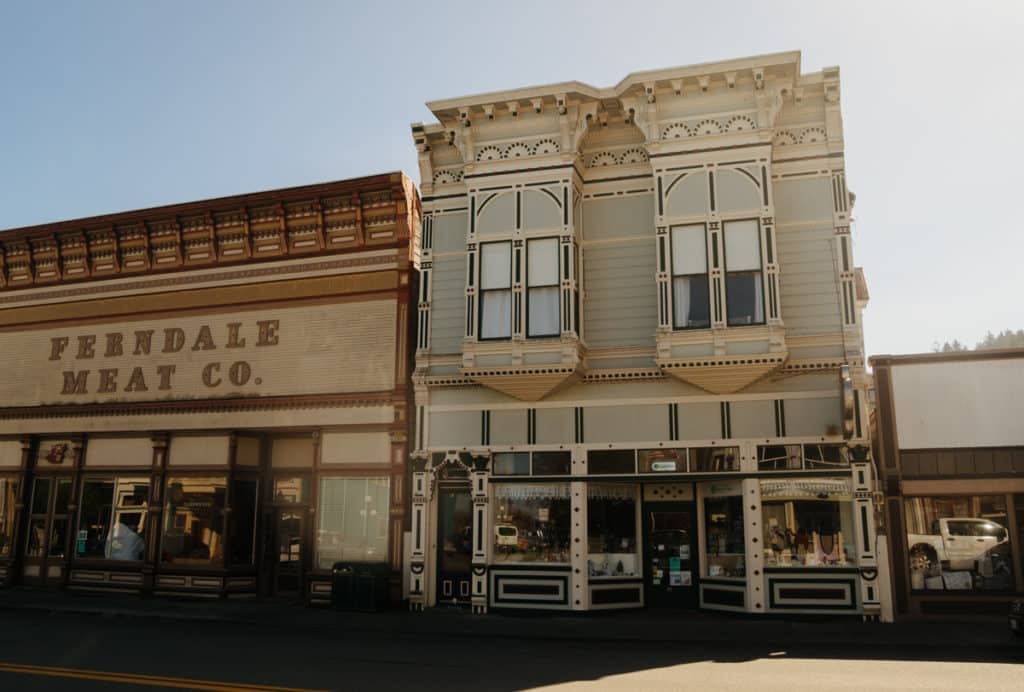
Beaches Along Mattole Road
When you continue from Ferndale, you’ll drive a portion of the road that goes along the coastline – I recommend getting out here to explore some of the beaches! The beaches are remote and unnamed – just some pretty overlooks and beaches that you can pull off at and stop to explore.
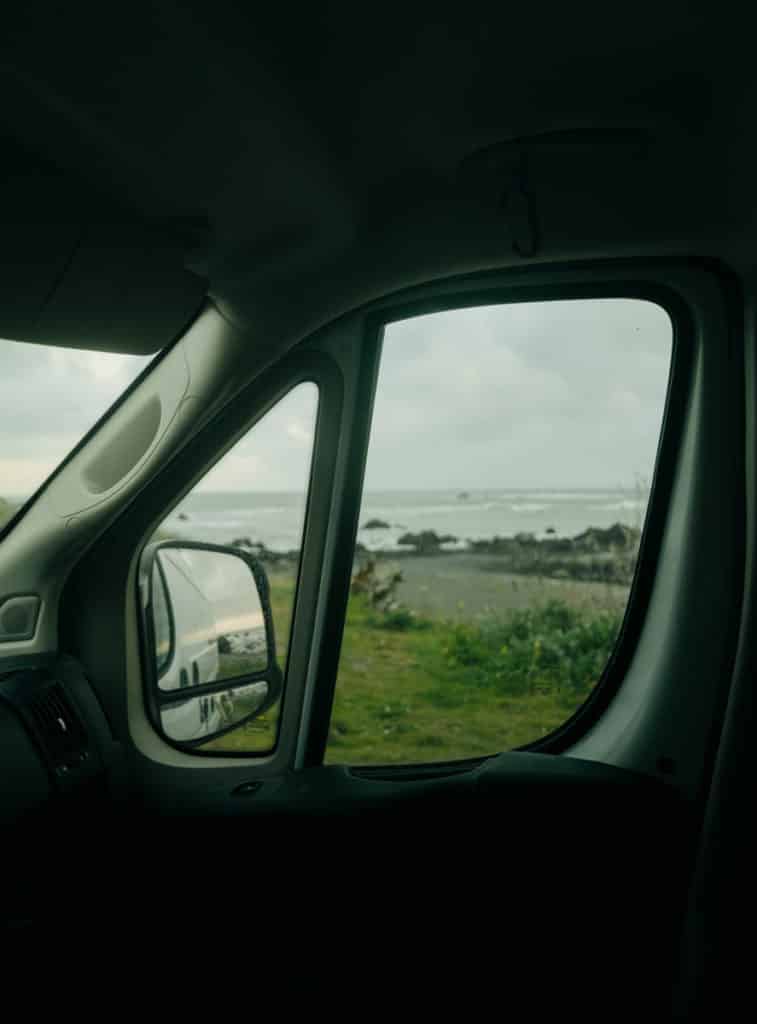

Petrolia
Petrolia is the only place to get gas on the Lost Coast – so if you need some, stop here! There isn’t very much to see in town, but it’s a cute place to walk around if you want to see some local gems, adorable houses, and a couple of shops. On Saturday mornings, if you visit the Lost Coast between May and October, you can stop by the farmer’s market!
Lost Coast Trail
For a truly incredible adventure, you can backpack the Lost Coast Trail! This 25.3 mile hike goes from Mattole Beach to Black Sands Beach, and you’ll trek through the King Range Wilderness for some jaw dropping views of the mountains and the ocean. To keep the Lost Coast wild, permits are required to backpack the Lost Coast Trail!
Mattole Beach
From Petrolia, take Lighthouse Road to Mattole Beach. This was my favorite beach on the Lost Coast road trip! It’s gorgeous, surrounded by mountains, and has some sand dunes to explore.
The road is unpaved, but it’s easy for any car – just avoid the potholes, and drive slow! At the beach, we saw some signs that said there might be elephant seals around – we didn’t see any, but you might. There’s also a campground at the beach, so you can stay here!
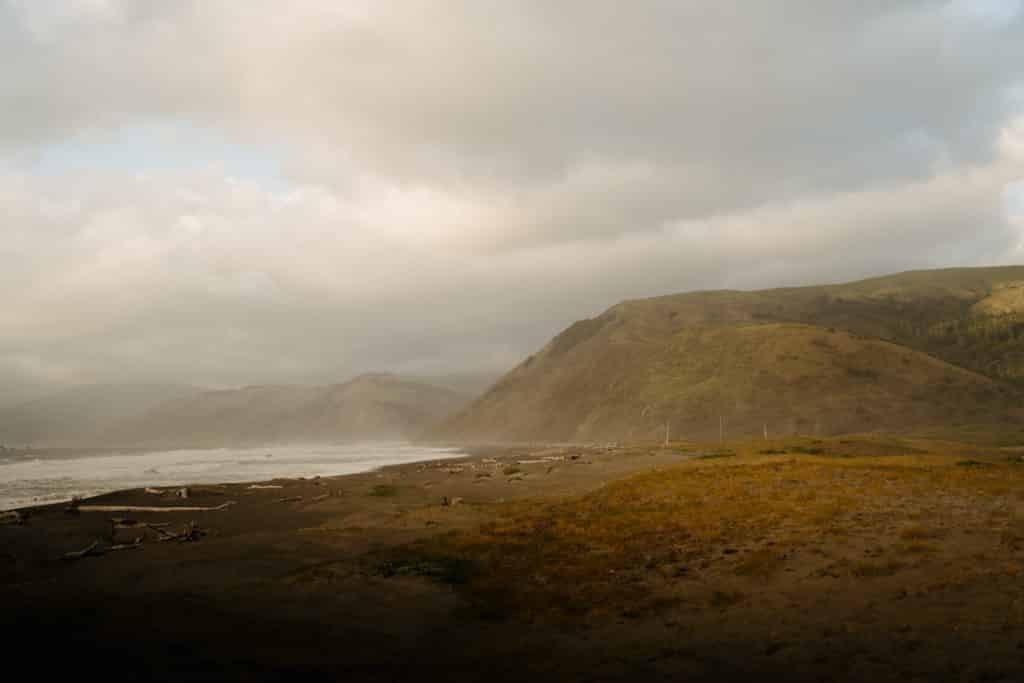
Punta Gorda Lighthouse Trail
If you want to hike during your Lost Coast Roadtrip, the Punta Gorda Lighthouse trail begins at Mattole Beach, and takes you along the shoreline, with the King Range mountains hugging the coast! You’ll end the hike at the lighthouse.
Honeydew
Honeydew is another adorable town on the Lost Coast! Stop here for a bite to eat, or to explore the local shops.
Black Sand Beach
Black Sand Beach is a truly incredible sight – the sand is black (as you probably guessed), contrasting with the white foam coming from the waves. If you use Google Maps, there are two places called “Black Sand Beach” – make sure you go to the one in Shelter Cove! It’s one of the most scenic places on the Lost Coast.
From the parking lot, it’s a short walk down to the beach, where you can explore the rocks and see the dramatic waves. Be careful here – the waves are unpredictable, and wild! You definitely can’t swim here, and I recommend keeping your distance from the water – it’s common for an unexpected wave to come up high, so stay stafe!
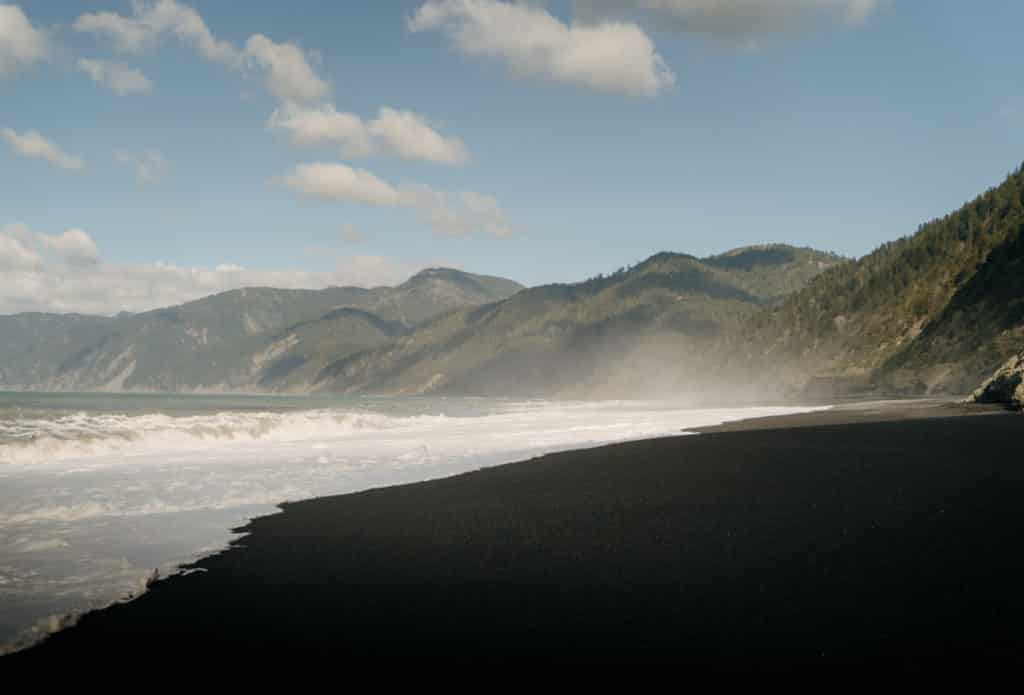
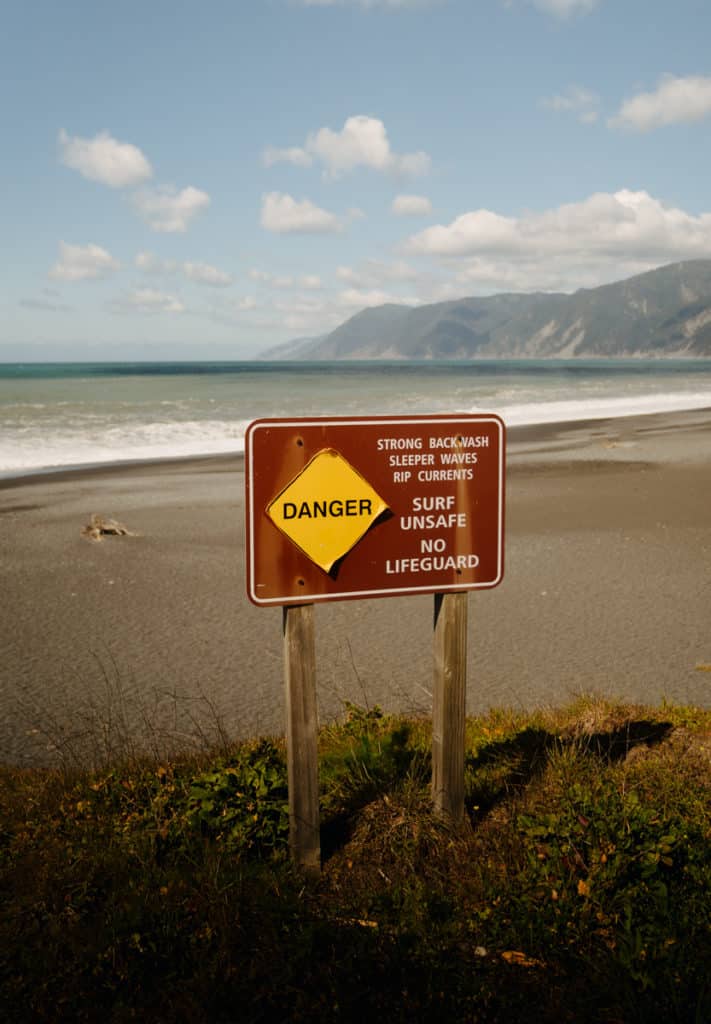
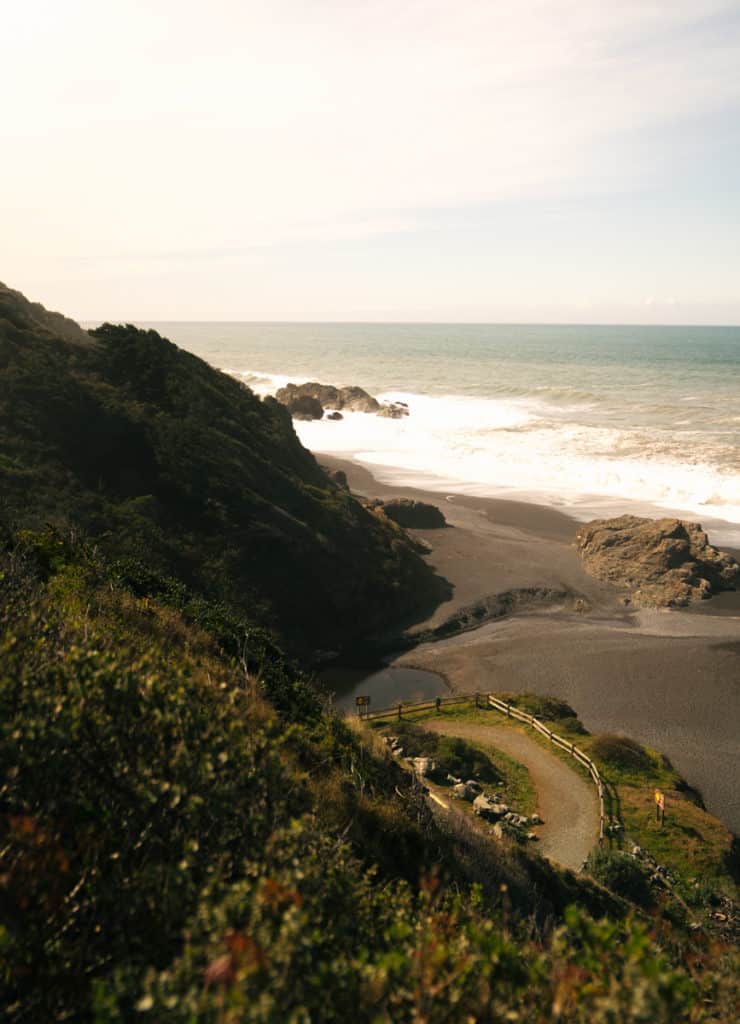
Shelter Cove
The town of Shelter Cove is our last stop on this Lost Coast road trip! This cute town is full of houses, and it has a few shops – along with Ferndale, this is the only place where you’ll find places to stay on the Lost Coast. Check out the Castle Inn of the Lost Coast, which sits right on a gorgeous cliff. There are also lots of private vacation rentals, like this beach bungalow, or this spacious chalet!
I recommend going down to Cove Beach – you can see seals playing right by the boat launch!
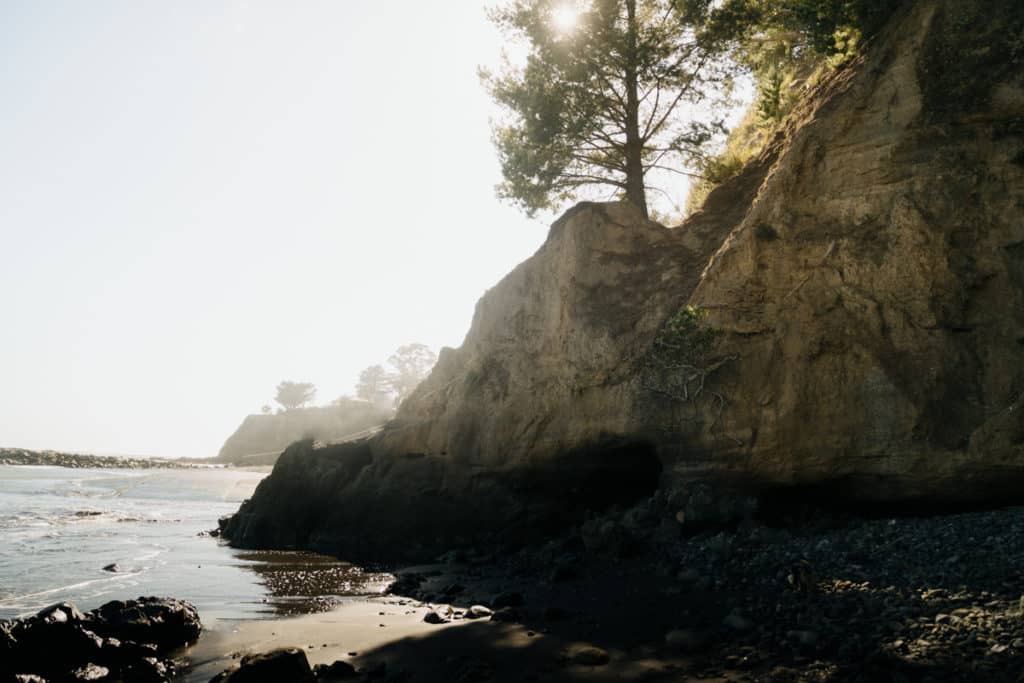
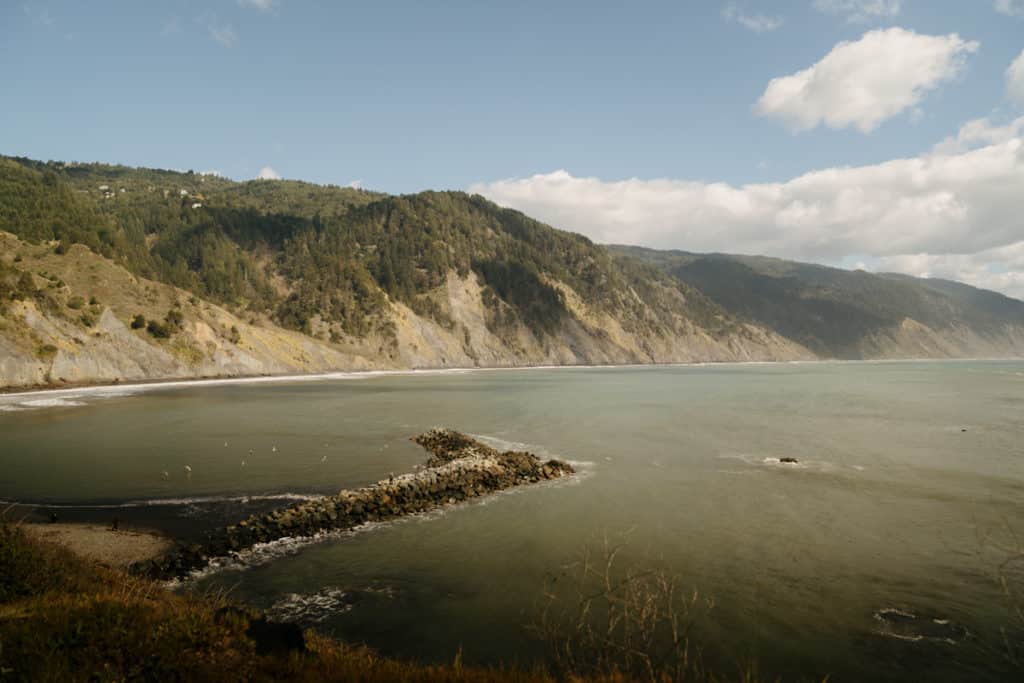
Right above Cove Beach, there’s a cute shop called Arts at Heart that you can check out for handmade jewelry, watercolors, paintings, and more art by local folks! The view of the beach from the shop is pretty incredible too.
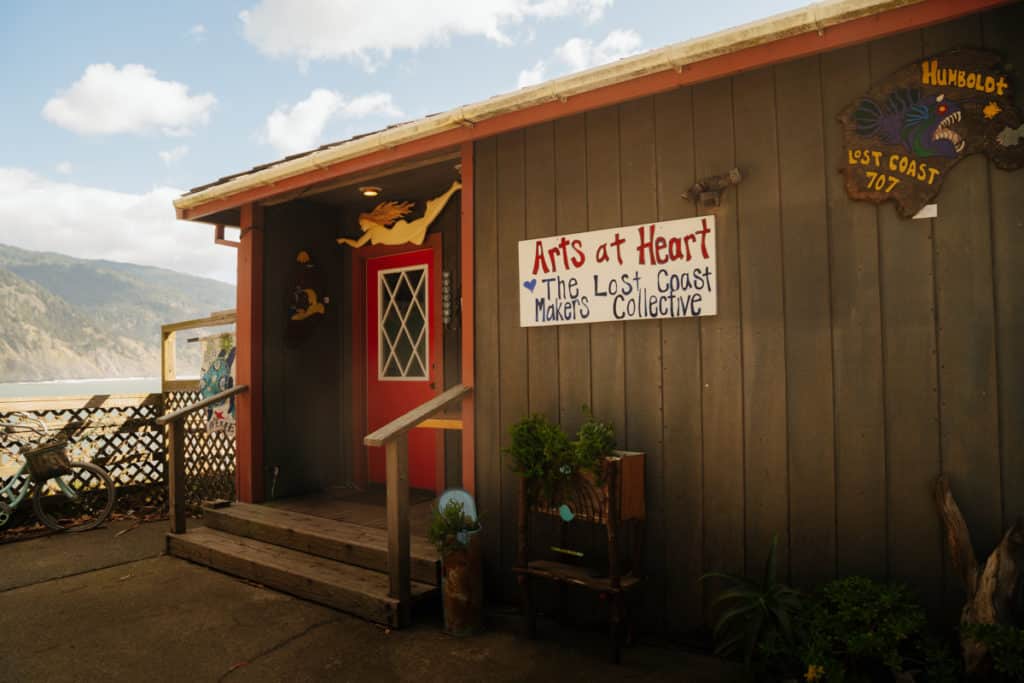
Lost Coast Road Trip Map
Here’s a map of California’s Lost Coast! This includes everything you need for your Lost Coast road trip.
The car icons are the roads you’ll take – the orange ones are the more adventurous route that may require a 4×4. The stars mark towns along the Lost Coast, and the houses are places to stay! The wave icons will show you the best beaches and things to see on your road trip.
Camping on the Lost Coast
You can definitely camp on your road trip to the Lost Coast – this is a more budget friendly, adventurous option. There are several campgrounds on the beaches and in the King Range wilderness, and my favorite way to find campsites is with The Dyrt!
There are also a few spots where you can camp for free – to learn how to find free campsites, check out this guide!

Lost Coast Road Trip Itinerary
To help you plan your Lost Coast road trip, here are a few sample itineraries!
1 Day Lost Coast Road Trip Itinerary
- Drive Mattole Road from Ferndale, stopping at beaches along the way
- Go to Mattole Beach
- Stop for lunch in Honeydew
- Drive to Black Sands Beach
- Explore Shelter Cove at sunset
- Continue to the 101 and extend your road trip on the California Coast!
3 Day Lost Coast Road Trip Itinerar
Day 1
- Explore Ferndale
- Stay at the Victorian Inn
Day 2
- Drive along Mattole Road through the countryside
- Stop at Mattole Beach
- Hike the Punta Gorda Lighthouse Trail
- Stay at the Mattole Campground
Day 3
- Drive to Black Sands Beach
- Explore Shelter Cove
- Visit Cove Beach at low tide
- Stay at the beach bungalow, or drive back to the 101 & extend your California Coast road trip!
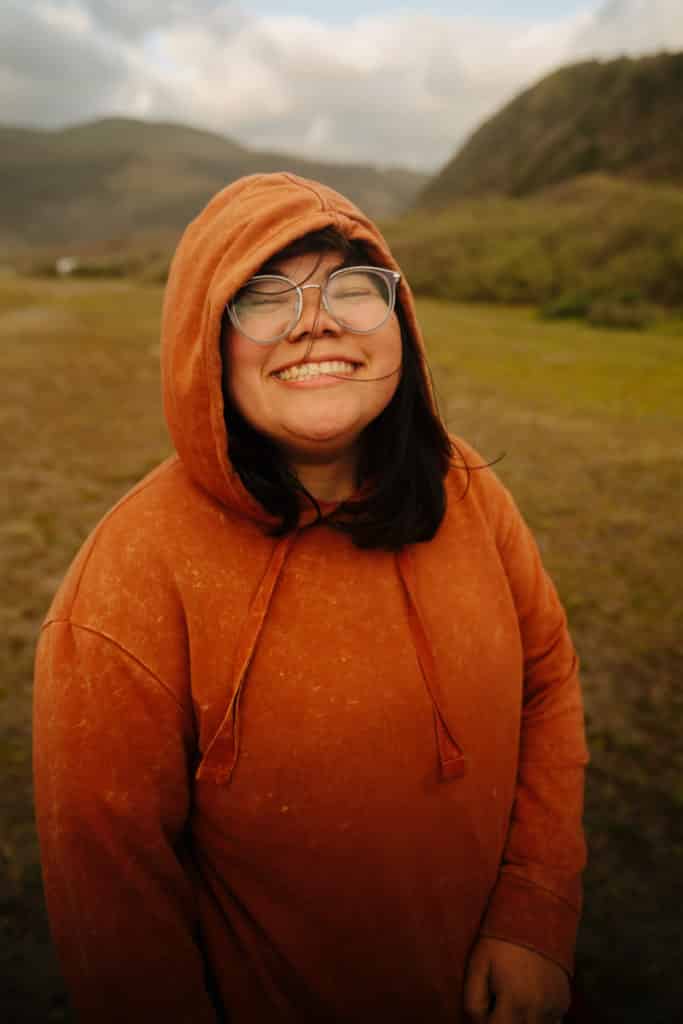
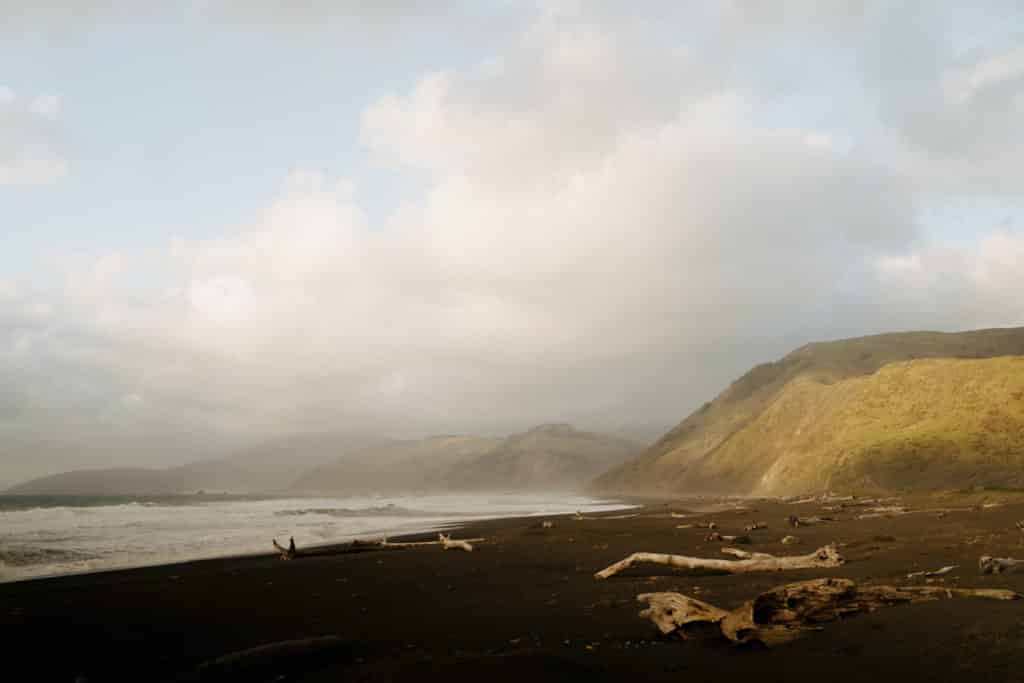
More Adventures For Your Lost Coast Road Trip
Have you visited the Lost Coast, or have any recommendations for things to check out nearby? Let me know in a comment below!
Here are some more adventures to have after your Lost Coast road trip:
Pin any of these photos to reference this Lost Coast road trip guide later!

